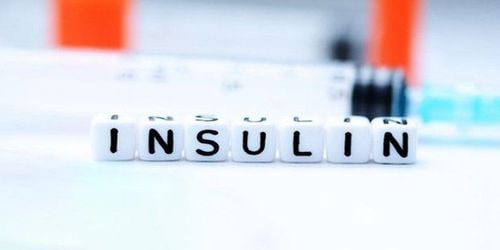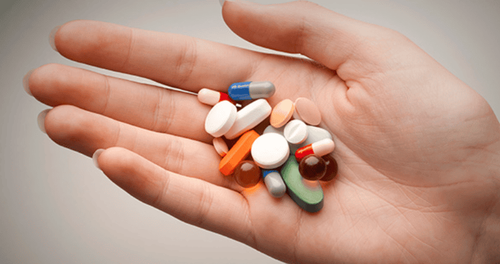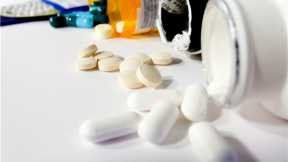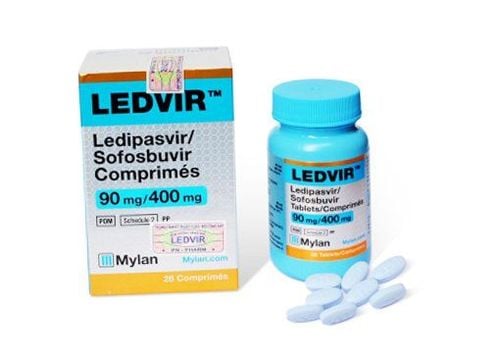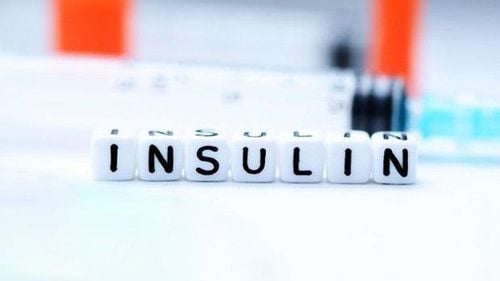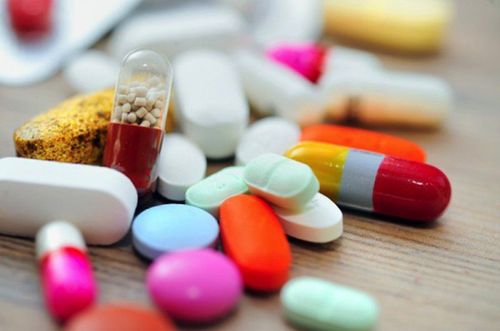This is an automatically translated article.
Type 2 diabetes is one of the most common endocrine system diseases today. The disease can cause many dangerous complications if blood sugar levels are not well controlled. What is the treatment regimen for type 2 diabetes?1. What is type 2 diabetes?
Type 2 diabetes is a chronic disorder of glucose metabolism, the disease has basic features such as:
High blood glucose level Presence of abnormalities in carbohydrate, lipid and protein metabolism in the body. Long-term complications of the disease are caused by the development of atherosclerotic plaques, including kidney, fundus, neurological and cardiovascular diseases.
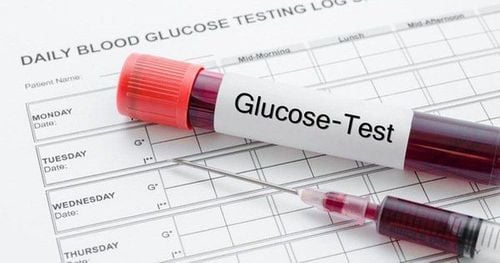
Bệnh nhân đái tháo đường type 2 có chỉ số glucose trong máu cao
2. Type 2 diabetes treatment regimen
Purpose of treatment
Stable control of fasting blood glucose, postprandial blood glucose close to physiological level. Bringing HbA1c to the ideal level to reduce complications of the disease, reduce mortality from type 2 diabetes. Maintain weight, lose weight with obese people and maintain a healthy weight. Principles of treatment
Must combine drugs to treat type 2 diabetes, diet and exercise. Combine blood sugar control with blood lipids, achieve a reasonable blood pressure... Use insulin as needed, especially in acute exacerbations of chronic diseases, infections or cardiovascular diseases severe... Treatment goal
Fasting blood glucose (mmol/L): good level is from 4.4 to 6.1; The acceptable level is below 6.5. Postprandial blood glucose (mmol/L): a good level is between 4.4 and 7.8 and is acceptable if below 9.0. A good HbA1c level is less than 7.0% and acceptable is between 7 and less than 7.5%. However, HbA1c levels are individualized, depending on the clinical situation. Young patients, newly diagnosed diabetes, no chronic complications, no comorbidities, it is necessary to keep HbA1c at 6.5%, but if the patient is elderly, has had diabetes for a long time, has complications If you are chronic, have many comorbidities, only an HbA1c level of 7.5% is acceptable.

Trong phác đồ điều trị tiểu đường type 2, việc tập luyện rất quan trọng
3. Choosing drugs to treat type 2 diabetes
3.1 Metformin (Dimethylbiguanide)
This is the most widely used group of drugs today. The dosage of tablets includes: 500mg, 850mg, 1000mg
Starting dose of 500 or 850mg tablets: 2 tablets per day. Maximum dose: 2500 mg per day Metformin's mechanism of action is to inhibit hepatic glucose production and increase peripheral insulin sensitivity. The drug can lower blood glucose by 2-4 mmol/l and reduce HbA1c by up to 2%. The drug does not cause complications of excessive hypoglycaemia if used alone. Metformin is recommended for the treatment of patients with type 2 diabetes who are overweight or obese because the drug helps maintain or reduce weight. However, the side effects of Metformin are gastrointestinal, so it should be taken with meals and started at a low dose (500 mg/day).
Contraindications: severe heart failure, liver failure, kidney failure... Metformin is also contraindicated in cases of acute tissue hypoxia such as people having myocardial infarction, septic shock...
3.2 Sulphonylurea group
The mechanism of sulfonylurea type 2 diabetes drugs is to stimulate the pancreas to secrete insulin, which can reduce glucose by 50 to 60 mg/dl, and reduce HbA1c by about 2%. Sulphonylurea should be used with caution in elderly patients, people with kidney disease (blood creatinine > 200 μmol/L) or liver dysfunction. Types of sulphonylurea:1st generation: tolbutamide, chlorpropamide, diabetol... function The usual dose is 500 mg, drugs of this class are now rarely used because of their high toxicity to the kidneys. Generation 2: glibenclamide, gliclazide, glipizide, glyburide... The usual dose for drug groups is:
Glipizide from 2.5 mg to 20.0 mg/day. Gliclazide from 40 to 320mg/day Gliclazide MR from 30 to 120mg/day. Glimepiride 1.0 – 6.0 mg/day – maximum up to 8.0 mg/day. Glibenclamide from 1.25 to 15.0 mg/day.
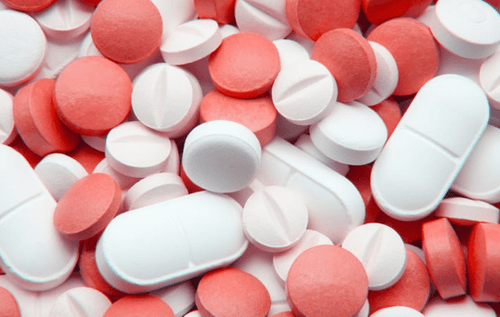
Nhóm thuốc Sulphonylurea kích thích tụy bài tiết insulin
3.3 Alpha-glucosidase inhibitors
The drug's mechanism of action is to inhibit the enzyme alpha-glucosidase, which helps to break down carbohydrates into simple sugars (monosaccharides), thereby slowing the absorption of monosaccharides and lowering blood glucose levels after meals. These drugs include:1st generation (acarbose group): This type often causes side effects such as bloating, diarrhea, etc. The dose can be increased from 25mg to 50mg or 100mg in each meal. eat. 2nd generation (voglibose group): This group of drugs mainly inhibits the breakdown of disaccharides, so there are fewer unwanted effects. The dose can be increased from 01 to 02 tablets in each meal.
3.4 Meglitinide/Repaglinide
This drug also stimulates pancreatic beta cells to secrete insulin but is not a sulfonylurea. Dosage: There are two drugs in this group
Repaglinide doses from 0.5 to 4 mg/meal. Maximum dose 16 mg/day. Netaglinide dose 60 to 180 mg/meal. Maximum dose 540 mg/day.
3.5 Thiazolidinediones (glitazone)
The drug increases the sensitivity of muscle and fat tissue to insulin by activating PPAR (peroxisome proliferator-activated receptor), increasing glucose uptake from the blood, increasing insulin sensitivity in skeletal muscle, and at the same time blocking the process glucose production from the liver.
Dosage: Pioglitazone dose from 15 to 45 mg/day. Contraindications of this group of drugs are in people with symptoms or signs of heart failure, liver or kidney damage. Many experts, many countries also recommend not to combine pioglitazone with insulin.
3.6 DPP-4 . Inhibitors
These are drugs with Gliptin tail, the mechanism is to help increase endogenous incretin levels, stimulate insulin secretion due to postprandial hyperglycemia. Dosage:
Sitagliptin dose 100mg/day Vildagliptin dose 100mg divided 2 times daily. Saxagliptin dose 2.5 - 5 mg/day.
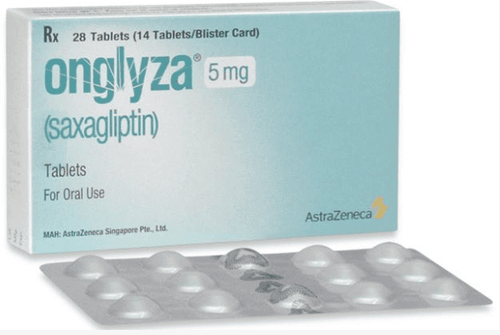
Thuốc Saxagliptin nằm trong phác đồ điều trị
4. When is insulin indicated?
Insulin may be indicated at the first visit if HbA1C > 9.0% and fasting blood glucose above 15.0 mmol/l (270 mg/dL). Patients with type 2 diabetes are suffering from another acute disease such as severe infection, myocardial infarction, stroke... Diabetic patients with renal failure have contraindications to taking blood glucose-lowering tablets or patients with impaired renal function. liver, liver damage... Gestational diabetes. People who treat blood glucose-lowering drugs with pills are not effective People who are allergic to blood-glucose-lowering tablets... Dosage of Insulin:
When starting insulin in combination with a sulfonylurea, the sulfonylurea dose usually needs to be reduced. 50% and drink only in the morning. The starting insulin dose is 0.1 units/kg body weight (0.1 UI/kg) NPH type, administered subcutaneously at bedtime, or 2 injections with mixed insulin (insulin premixed) depending on plasma glucose levels and/or HbA1c.
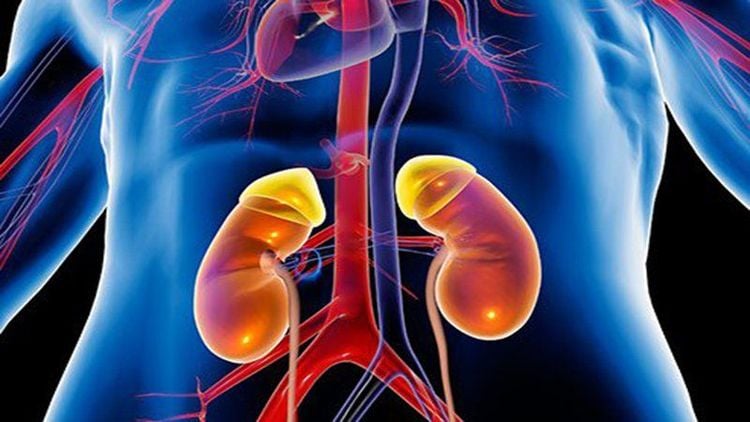
Bệnh nhân đái tháo đường suy thận chống chỉ định dùng insulin
5. Principles of using drugs to treat type 2 diabetes
If the HbA1c level is > 9.0% and the fasting plasma glucose level is > 13.0 mmol/l, a combination of 2 glucose-lowering tablets can be considered. If HbA1C > 9.0% and fasting blood glucose > 15.0 mmol/l, insulin may be indicated immediately. Monitor and evaluate the indicators of fasting blood glucose, postprandial blood glucose, and HbA1c (check every 3 months) to meet the treatment goal or not. If blood glucose is well stabilized, HbA1c can be checked every 6 months. For medical facilities that cannot perform HbA1c test, it is possible to evaluate according to the average plasma glucose level or monitor the effectiveness of treatment with fasting blood glucose, blood glucose 2 hours after eating. About a third of people with type 2 diabetes use insulin to keep their blood glucose levels stable. Maintaining blood glucose levels near physiological levels has been shown to be the best way to prevent vascular disease, to help reduce mortality, prolong life, and improve patients' quality of life.
Currently, Vinmec International General Hospital is providing a Diabetes Screening Package to help patients detect the disease early and improve treatment efficiency.
To register for an examination at Vinmec International General Hospital, please book an appointment on the website to be served.
Please dial HOTLINE for more information or register for an appointment HERE. Download MyVinmec app to make appointments faster and to manage your bookings easily.




